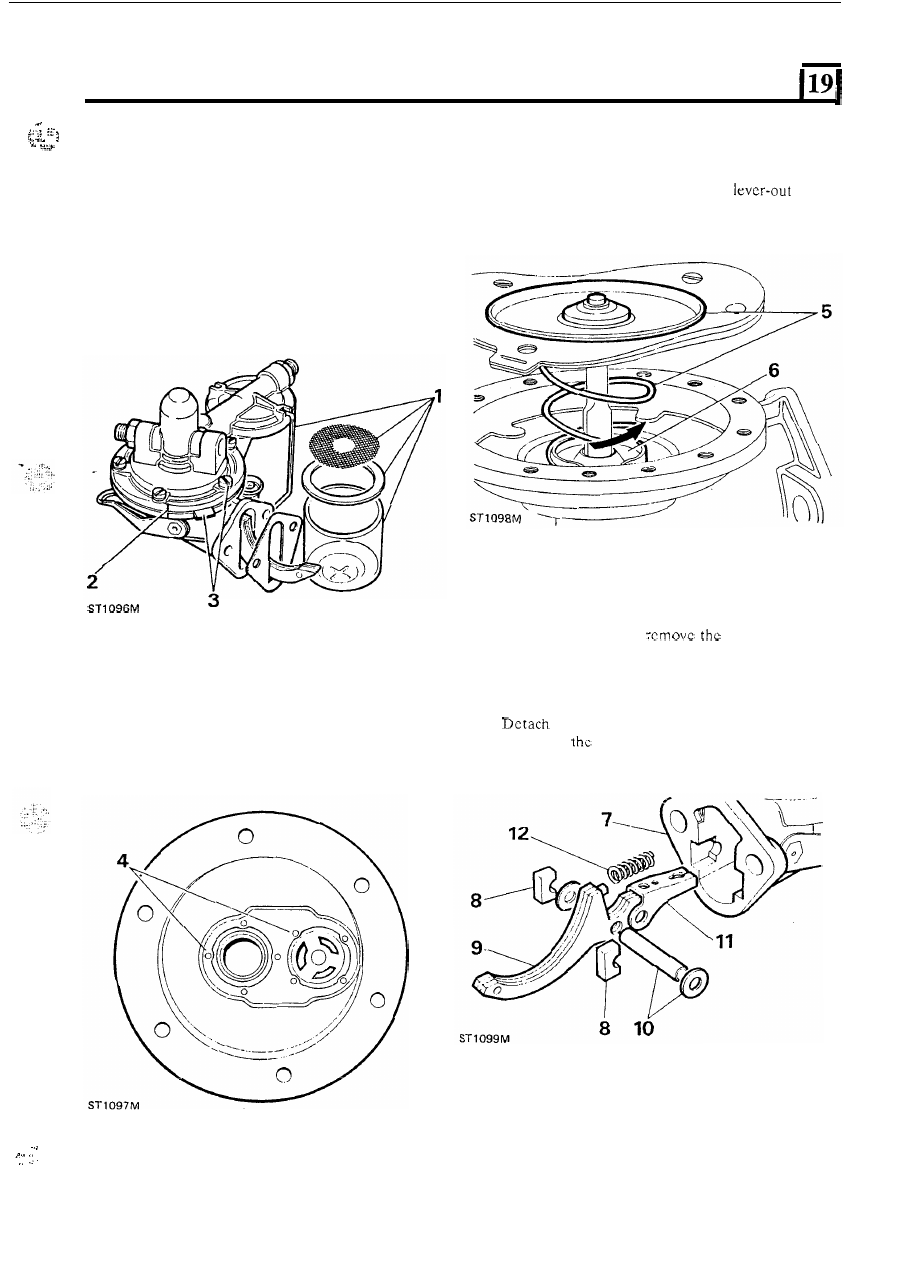Defender 90 / 110 / 130. Manual - part 52

P
ETROL FU
EL SYSTEM
OVERHAUL FUEL LIFT PUMP
DISMANTLE
5 .
Turn, whilst pressing down the metal part
of the
diaphragm through
90" in either direction and
withdraw the diaphragm and spring.
6 .
Unstake the
oil seal housing and
the oil
scal and retainer.
1. Remove the sediment bowl, where fitted, and
collect the filter gauze and sealing washer.
2. Mark the upper and lower halves of pump casing to
ensure correct alignment
on reassembly.
3. Remove top cover fixing screws, and while pressing
diaphragm tab against pump body, lift top cover
clear.
7.
Using a small chisel,
staking from the
rocker arm retainers.
8. Withdraw the retainers.
9. Withdraw the rocker arm.
10. Withdraw the rocker arm pin and washers.
11.
the operating link.
12. Withdraw
rocker
arm spring.
4.
If necessary remove the valves by cutting away the
retaining stakes with a scraper. Warm the top
cover, note the position
of the valves and withdraw
them from the cover.
.
.
...
. .
. . . .
,
.
..
.
13. It is unlikely that
t h e
hand priming mechanism will
ever require replacement, but
i t
can be removed by
filing the hexagon each side
of the operating lever
and springing the hand lever clear, withdraw the
cork washers and hand rocker.
1